Update 18/08/22: Giant has now officially launched the 2023 Propel aero bike. Head to our story on the new Giant Propel for more.
On the eve of the 2022 Tour de France, we had the chance to get up close and personal with the new Giant Propel Advanced SL.
On the face of it, the new aero road bike doesn’t represent a radical departure from the previous Propel (which was last updated in 2018).
That’s not to say there haven’t been some significant changes, however. Let’s take a look at what’s new.
New Giant Propel | What we know so far
- Claimed to be “significantly lighter” than the previous Propel
- New Cadex wheels
- Updated front-end components
- New integrated cable routing system
- Potentially more comfortable, but not massive tyre clearance
- New aero water bottle cages
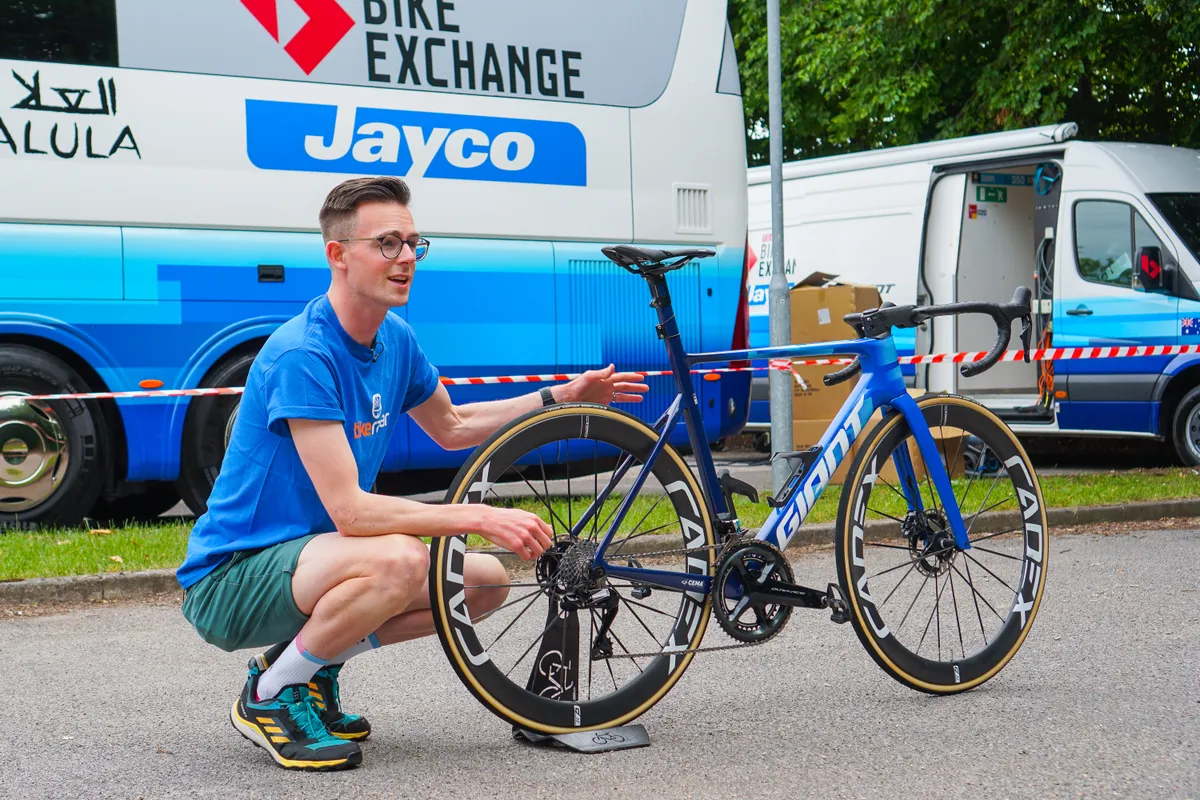
Propel-lite
Giant appears to have put the Propel on a diet.
While the head tube, down tube and fork remain heavily aero-optimised, the rear is now distinctly slimmer.
The seat tube and integrated seatpost look very similar to that seen on Giant’s lightweight climbing bike, the TCR Advanced SL Disc.
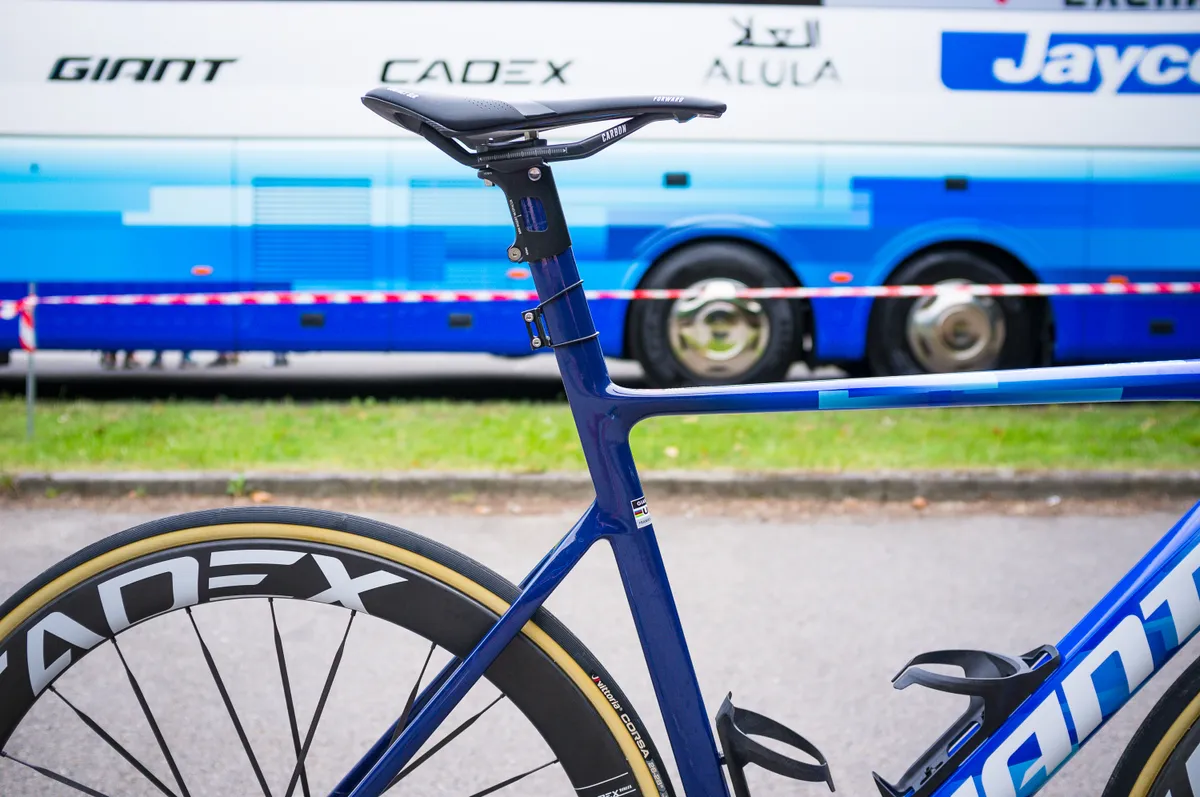
Giant told us the seatpost topper isn’t shared with the TCR, though, indicating the tube profiles aren’t exactly the same.
While Giant declined to let us weigh the Team BikeExchange-Jayco bike in Copenhagen, it nevertheless claimed the new bike is “significantly lighter” than the old one.
If true, that’s fairly impressive considering the previous version was, at around 7.4kg for the top-spec Advanced SL Disc 0 model, no heavyweight.
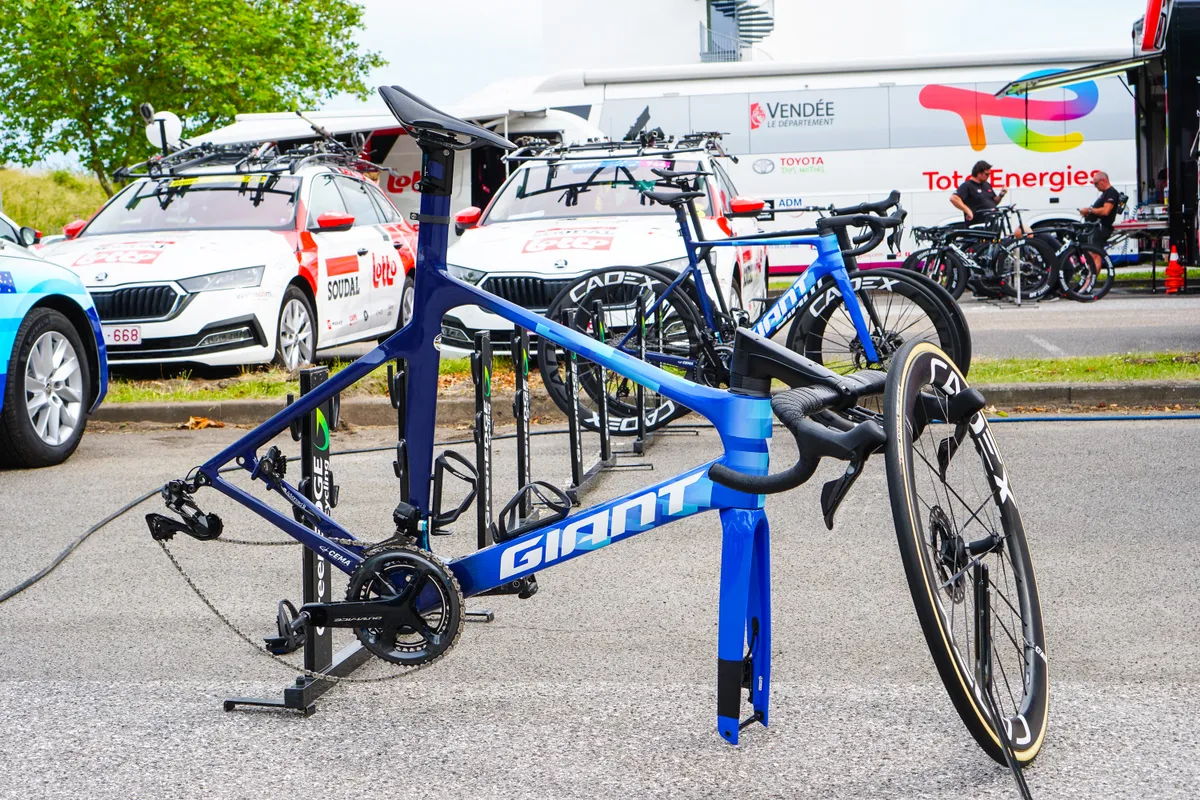
Giant also suggested slimming down the frame hasn’t negatively impacted aerodynamic performance, but we’ll have to wait for the official launch to get confirmation on the exact aero and weight figures.
Having spent the previous two days moving 7.6-8.3kg aero Tour de France bikes around, the new Propel did feel relatively light in the hand, though.
New wheels to match?
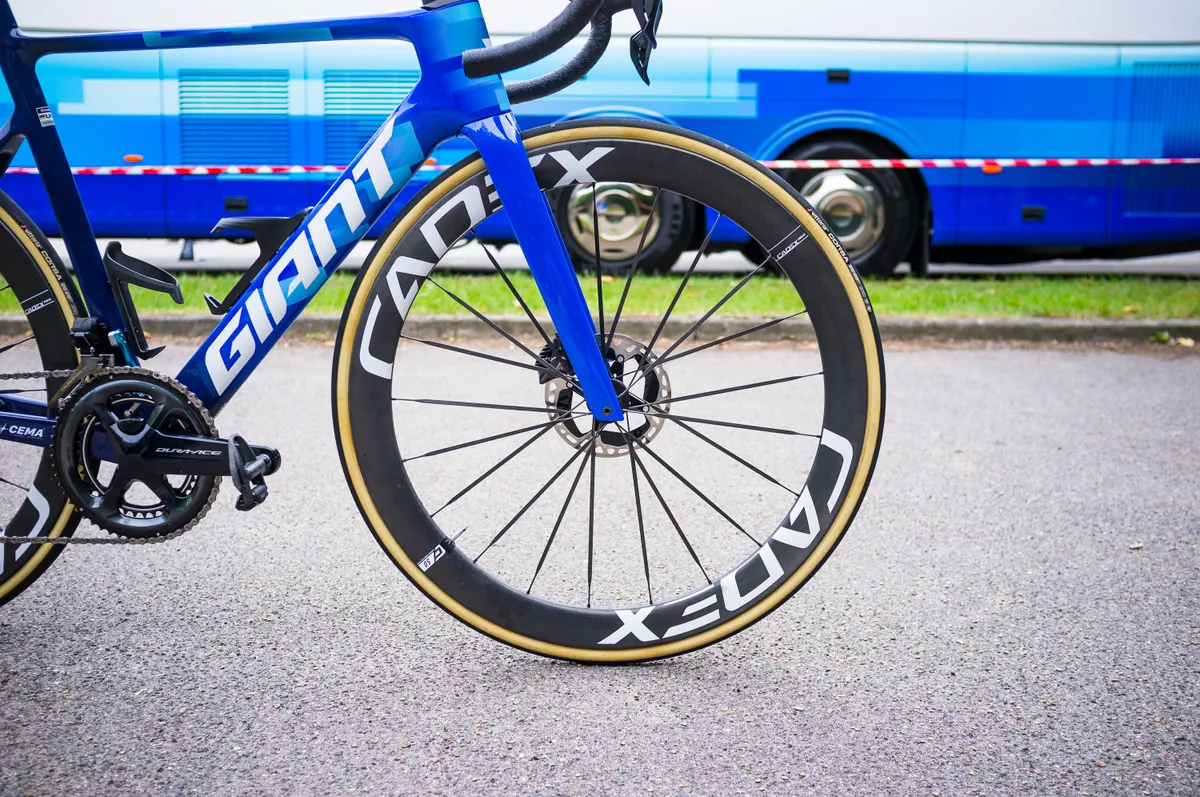
The particular bike we saw (which belonged to Team BikeExchange-Jayco rider, Chris Juul-Jensen) was shod with a set of unreleased Cadex carbon wheels, labelled ‘Cadex Ultra 50’.
Based on our experience with Cadex wheels (such as the Cadex 42 Disc), and the fact that these particular wheels had tubular rims and carbon spokes, we expect them to be a pretty lightweight set of hoops.
We’d expect stock bikes to come with tubeless-ready wheels (perhaps a tubeless-ready version of these wheels), which is likely to add some weight compared to the build we saw.
Giant didn't go into too many details about these new wheels, though, so we’ll have to wait to find out more.
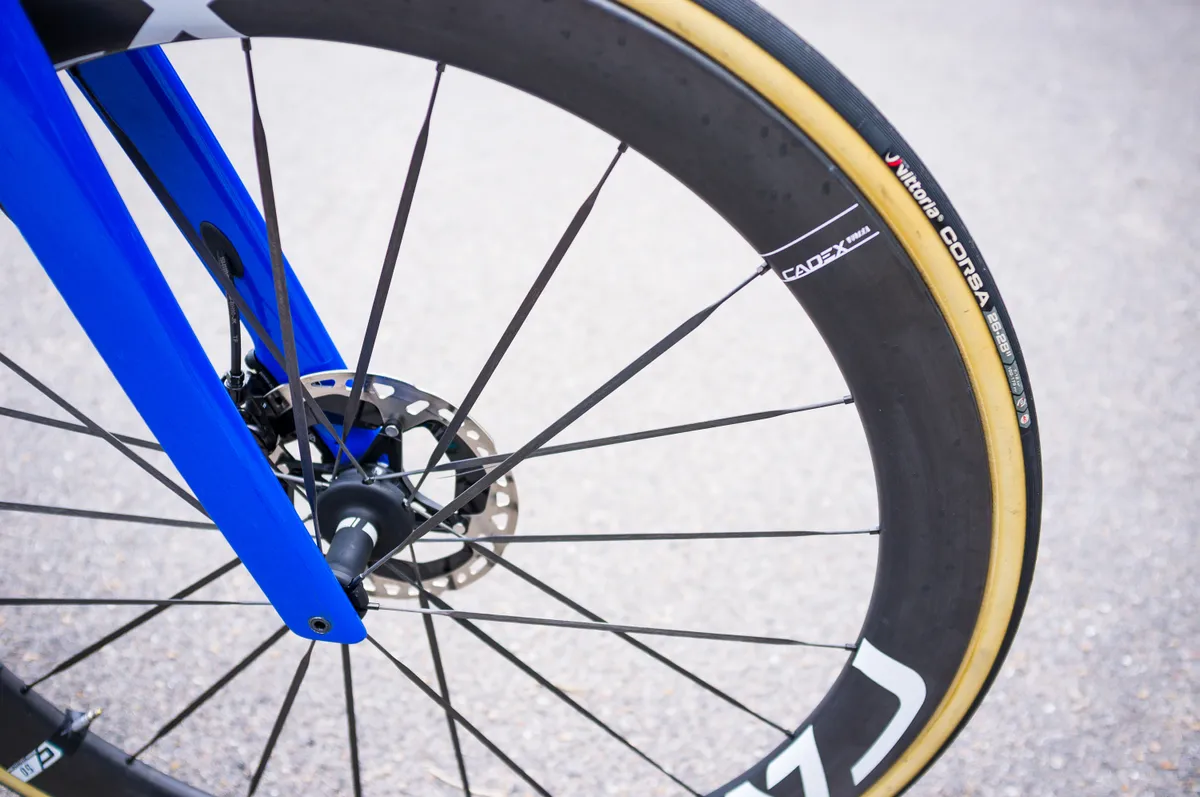
Updated front end and new cable routing
At the front of the bike, Giant has completely overhauled the handlebar, stem and cable routing system.
The cables and hydraulic brake hoses are still completely hidden from the wind, but now run underneath the stem and into the frame in front of the steerer.
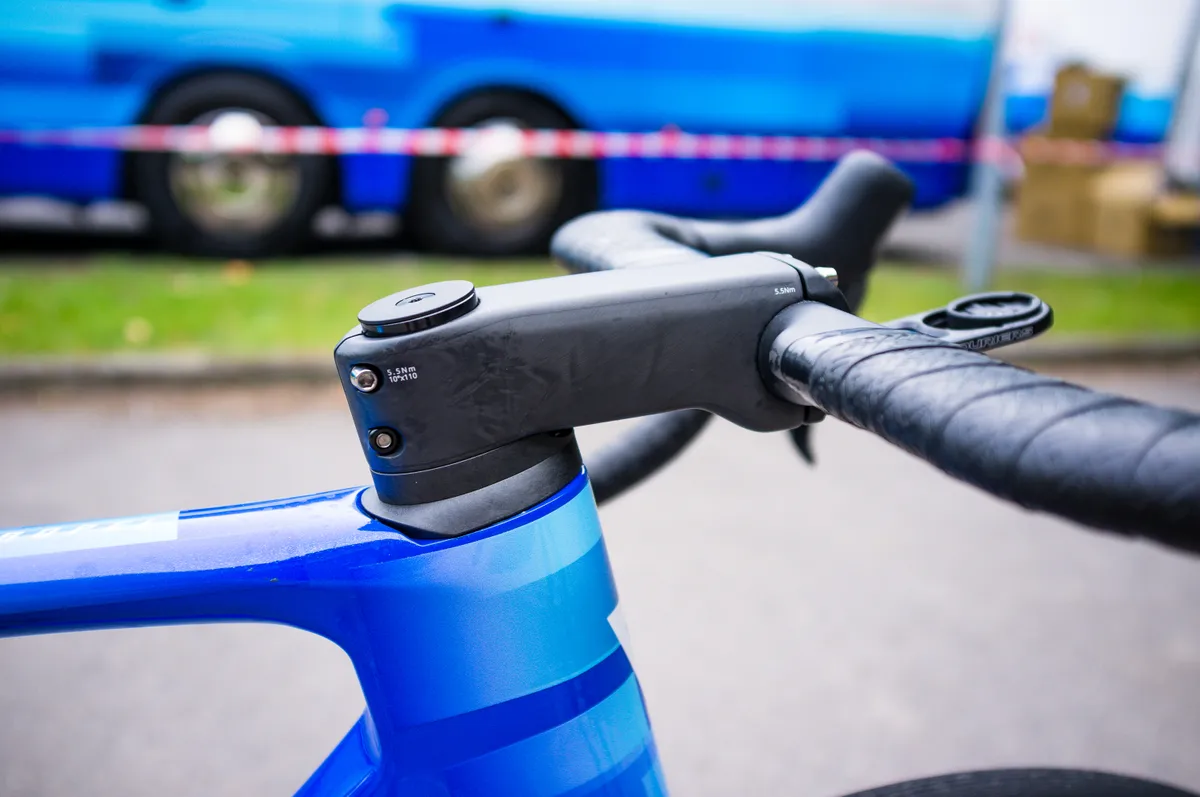
In contrast, cables and hoses on the previous Propel exited the handlebar at the stem clamping area and ran above the stem (underneath a removable plastic cover), entering the frame behind the steerer.
All things considered, the new system looks much cleaner.
Giant has also stuck with a non-integrated handlebar and stem.
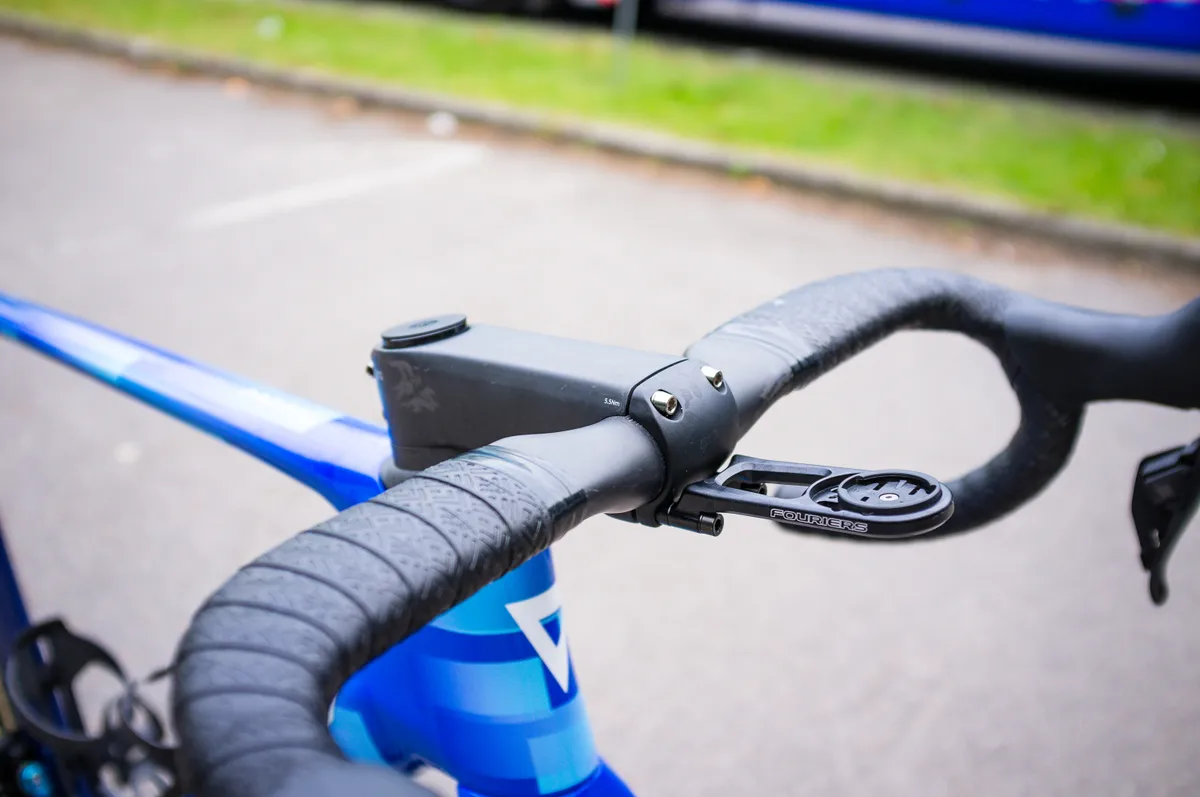
Though fully integrated options, as seen on many modern aero road bikes (such as the new Trek Madone SLR), offer a potential reduction in weight and aerodynamic drag, they can also be restrictive in terms of bike fit and rider choice.
The new stem is similar (but not identical) to the Giant Contact SLR OD2 carbon stem specced on the TCR Advanced SL.
The new carbon aero handlebar is more different to the TCR’s round, Contact SLR handlebar, however.
While it has a round clamping area, it has flattened tops for improved aerodynamic performance and a deeper drop.
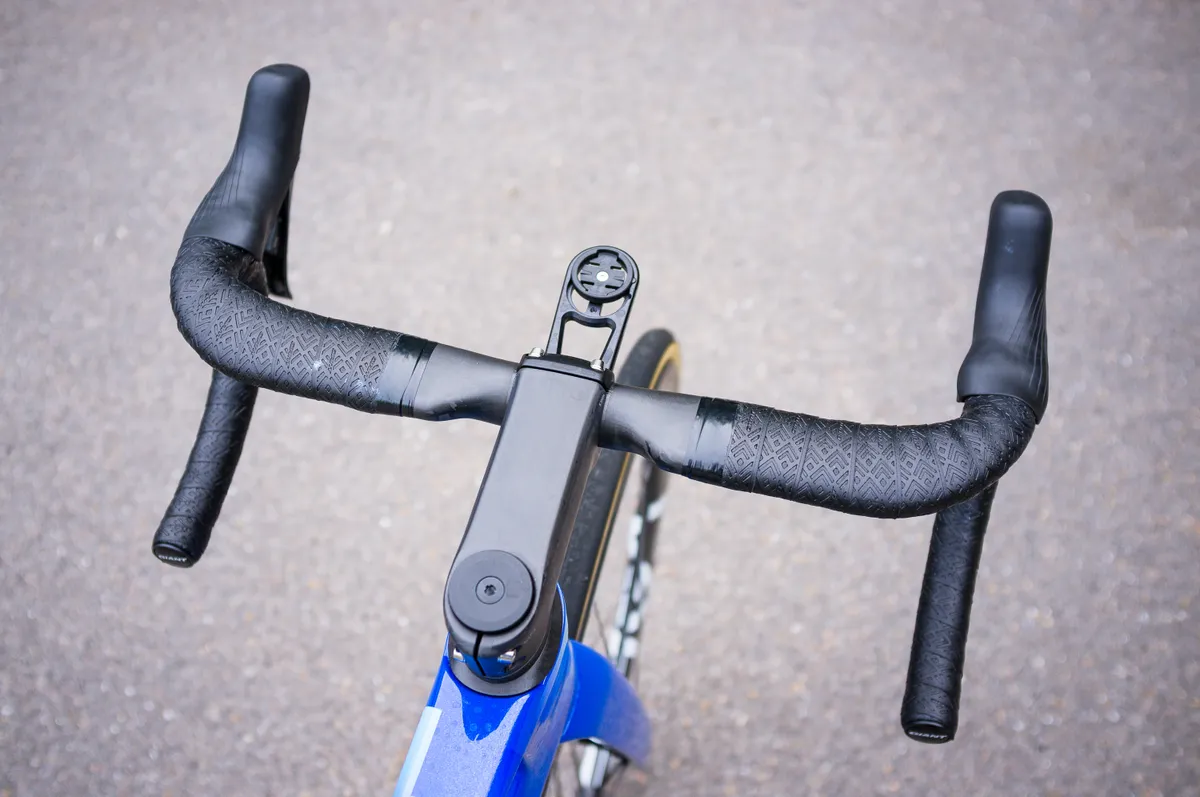
It’s far from the most unusual aero road handlebar we’ve ever seen (that award goes to the Ribble Ultra SLR’s handlebar), but it’s a vanilla option that’s unlikely to offend potential customers and should offer the opportunity to tweak components for fit purposes.
It would appear Giant is also sticking with a round, 1-1/4in steerer, meaning you’ll be able to swap the stock cockpit setup for something different, if desired.
Laterally stiff, vertically compliant?
While the previous Propel was renowned for its impressive pedalling stiffness, it was also generally acknowledged to be fairly firm, especially at the rear end.
While the chunky down tube and bottom bracket area suggests stiffness is likely to remain unchecked, the new Propel’s slimmed down seatstays promise an improvement to vertical compliance (or ‘comfort’, in simpler terms).
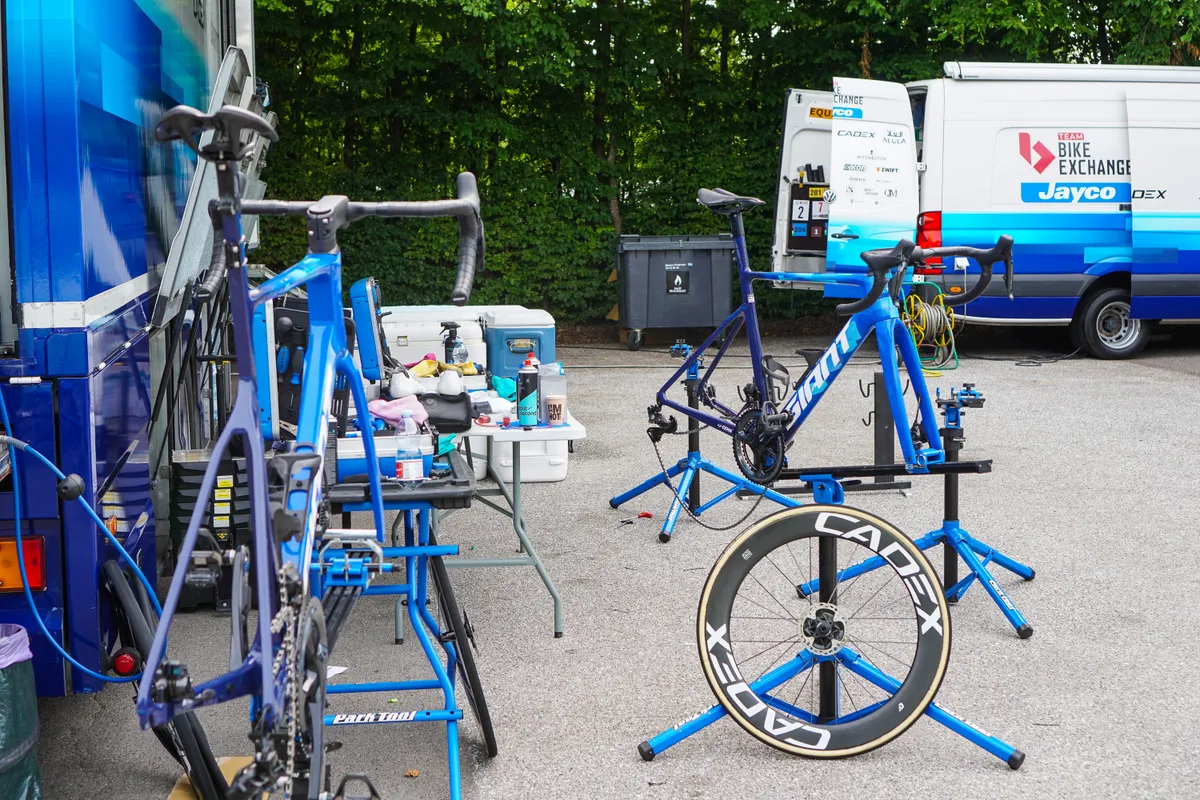
Combined with the claimed weight reduction, this should bring the Propel much closer to ‘do-it-all’ road-racing bike territory.
That space is currently occupied by bikes such as the Specialized S-Works Tarmac SL7, Pinarello Dogma F and Factor Ostro VAM.
However, trying to appease lightweight climbers and aero fanatics in one package is no mean feat. With road disc brakes, aero-optimised everything and tubeless wheels and tyres, there is a general trend towards top-level race bikes being heavier than machines of old.
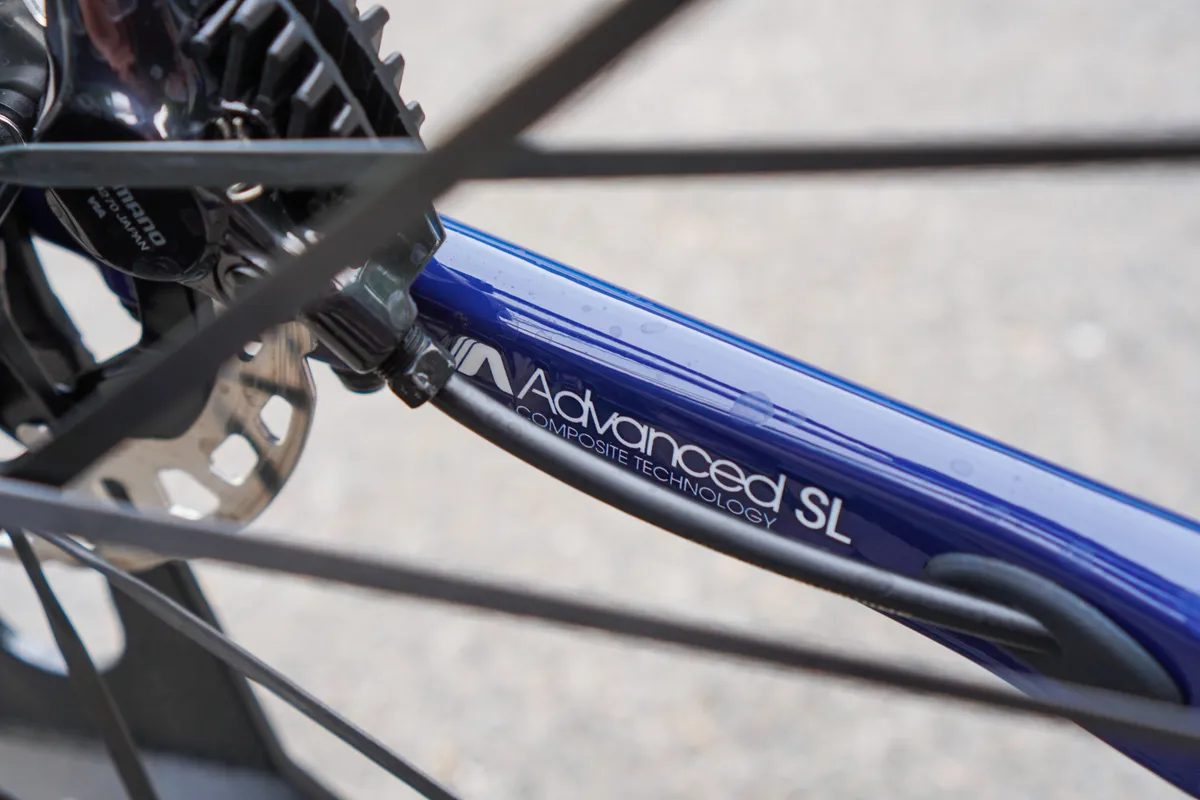
Tyre clearance
With the latest generation of disc-brake TCR’s getting an impressive 32mm of tyre clearance, we had expected the new Propel would follow suit.
Given the general direction of travel for the road cycling industry (many of the best road bike tyres are generally getting wider and more voluminous), this seems an obvious upgrade.
Based on what we saw, though, that might not be the case.
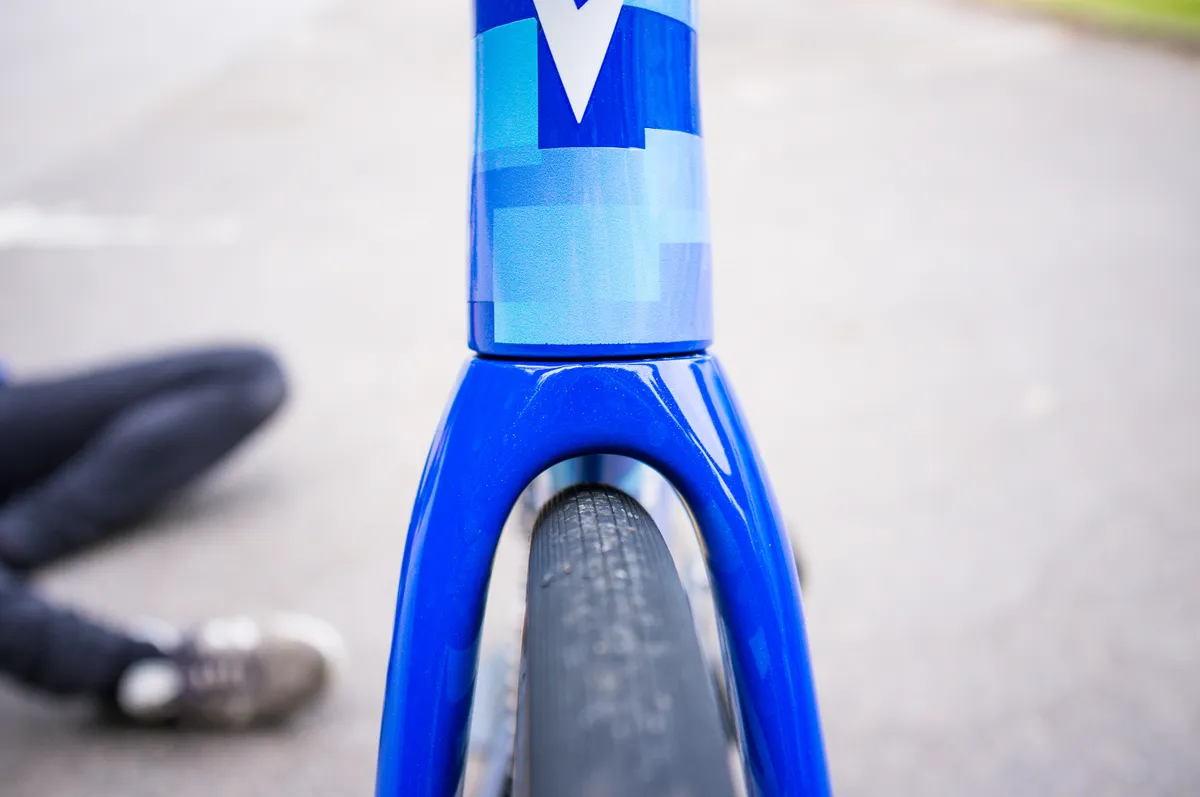
Jensen’s bike was running Vittoria Corsa tubulars tyres, in a 26-28in size (equivalent to a 700 x 26c clincher), and there wasn’t much clearance left around them, especially in the fork.
We expect the new Propel will have ‘official’ room for a 700 x 28c tyre, but not much more.
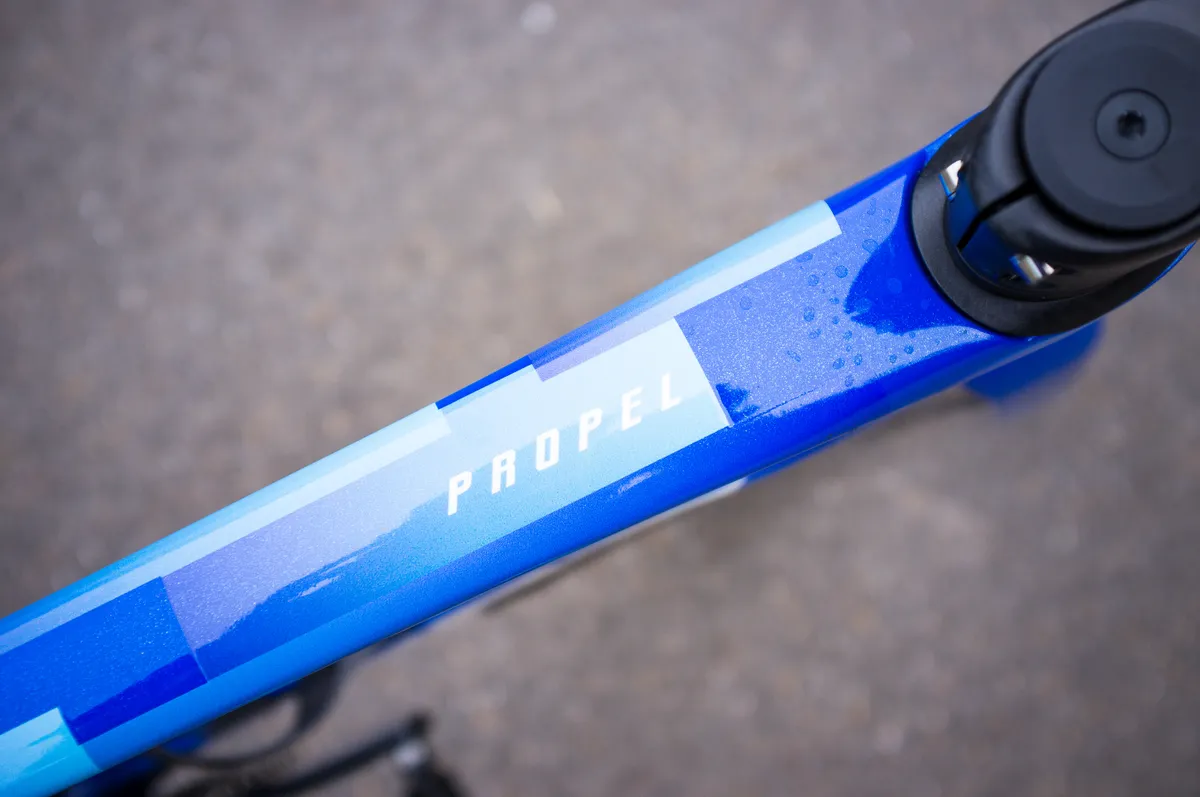
Take this with a pinch of salt, because we didn’t have our vernier calipers to hand to measure the Vittoria tyre’s true size. That said, we would expect them to measure up fairly true to the stated width, given the inflated width of tubular tyres isn’t affected by internal rim width of the wheel they’re mounted to.
Either way, this isn’t an aero bike straying into gravel territory.
New aero bottle cage
Last, but certainly not least, Giant seems to have adopted BMC’s idea of using a cleverly shaped bottle cage to improve the Propel’s aerodynamic performance with standard, round water bottles.
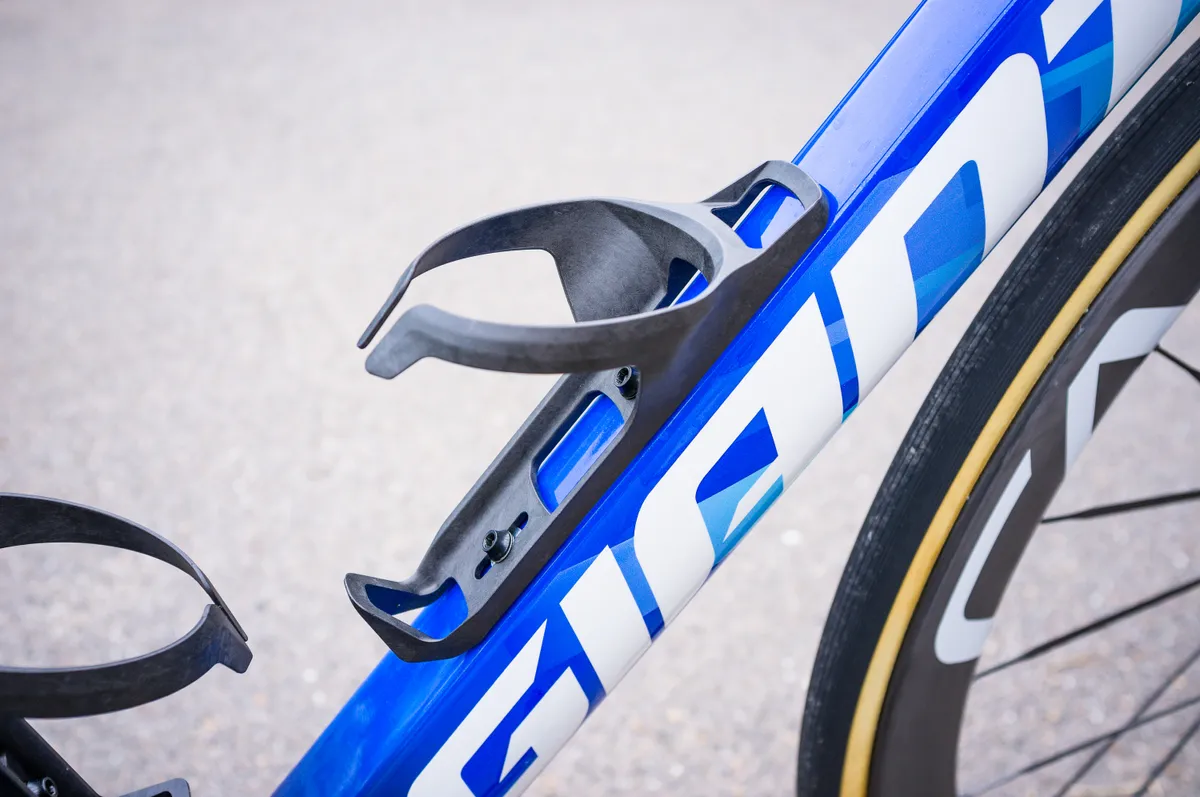
The composite bottle cage, which sits on the down tube, spreads the full width of the tube, and appears as if it would wrap closely around a bottle, smoothing the transition between the frame and the bottle.
The bottle cage on the seat tube is less obviously aero profiled, but given that tube is so much smaller than the down tube, it’s possible trying to smooth out the transition between those two proved a fruitless task.
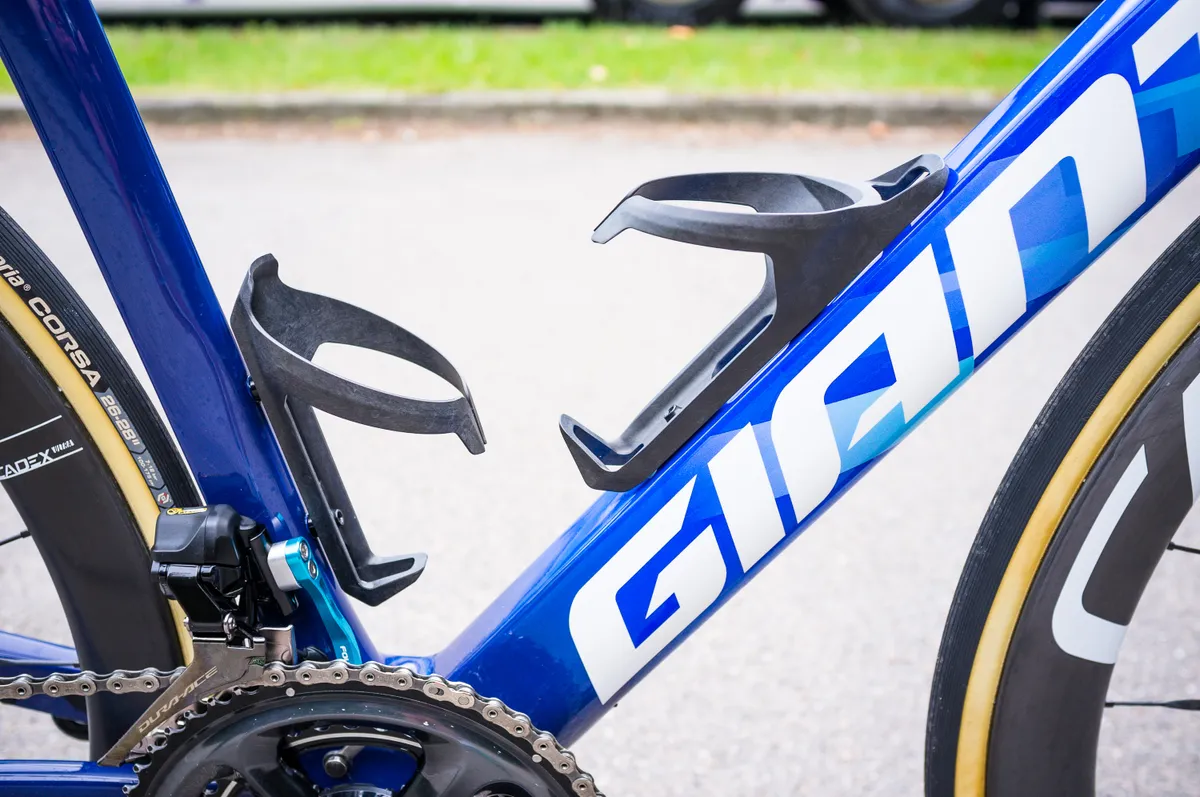
It’s a small detail, but one that is likely to benefit most riders.
While true aero-water bottles (such as that seen on the latest Orbea Orca Aero) might test faster in a wind tunnel they’re generally less practical in the real world, meaning riders will often remove them and install cages for round bottles anyway.
The original continues below...
We spotted a new Giant Propel at the 2022 Tour de France team presentation, which took place yesterday.
Pictures of Team BikeExchange-Jayco at the presentation show the new bike retains the horizontal top tube and integrated seatpost of the previous version. However, it appears this new version is more aero at the front and lightweight at the back.
Giant appears to be making the new Propel an all-round race bike. This follows a trend of brands favouring aero-optimised designs for all terrains rather than splitting their fleet into climbing bikes and aero road bikes.
Just think of the Specialized Tarmac SL7 assuming the now-discontinued Venge’s responsibilities or Team Ineos riding the Pinarello Dogma F for all road stages.
Elsewhere, it appears there is a new stem, bar and cable-routing engagement.
We’ve got a team of eagle-eyed newshounds on the ground at the Grand Départ in Copenhagen. They’ll be prowling the pits for the next few days trying to catch a clearer glimpse of the bike but, in the meantime, here’s everything we know about the new Giant Propel.
A new all-rounder?
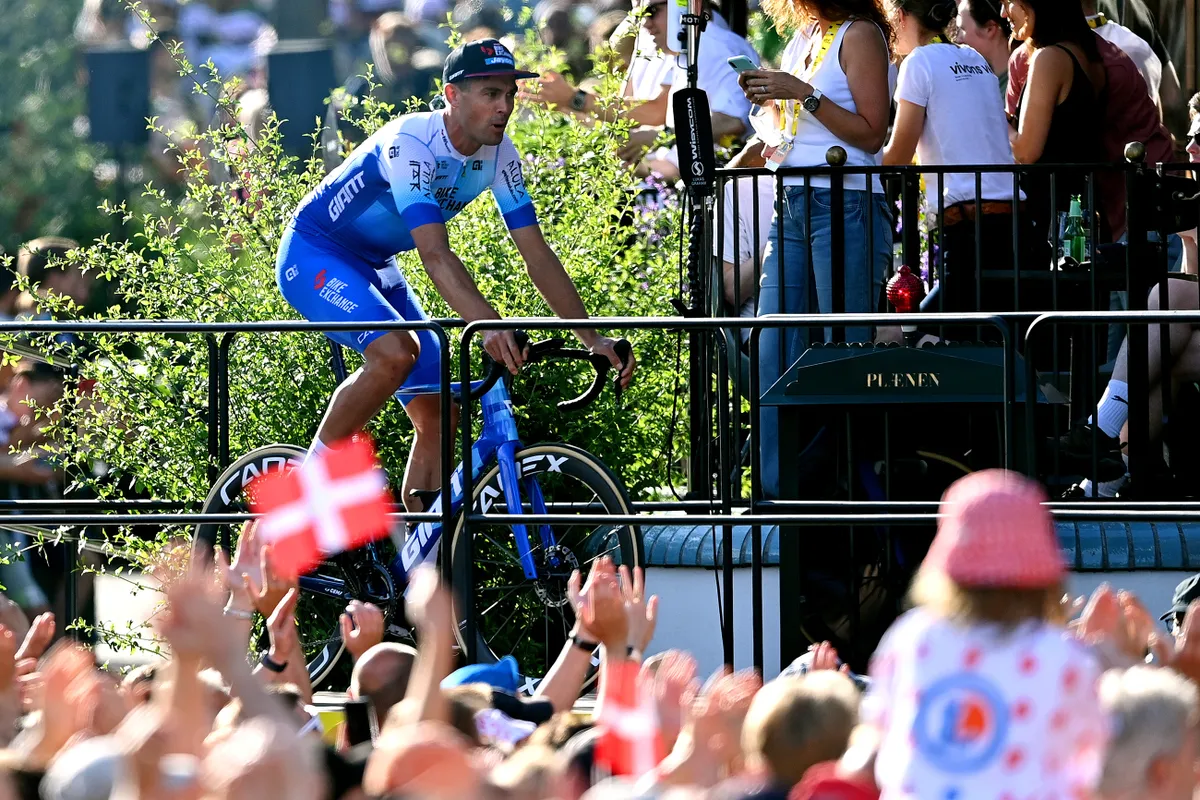
The Giant Propel first appeared in 2012 before it was officially launched in 2013.
Typical of aero bikes at the time, the original Propel had proprietary V-brakes hidden behind the fork and seatstays.
Other than shifting to disc brakes with the 2018 Giant Propel Advanced Disc, not much has changed from the original silhouette of the bike.
This new version suggests Giant is retaining a similar silhouette but turning the Propel into more of an all-round race bike.
The horizontal top tube remains and appears to be Giant’s approach to aero-optimisation. This is different to the sloping top tube of the Giant TCR climbing bike, but it is also at odds with what other brands are doing when it comes to aerodynamics.
The new Cannondale SuperSlice time trial bike we spotted as part of the Rapha x Palace collaboration has a sloping top tube. To a lesser extent, the new Scott Foil RC has a sloping top tube, too.
Giant seems to have revised the front end of the bike to make it more aerodynamic. The rear section of the head tube has a more vertical section than its predecessor, presumably to create an aerodynamic effect, as on Kammtail tube profiles.
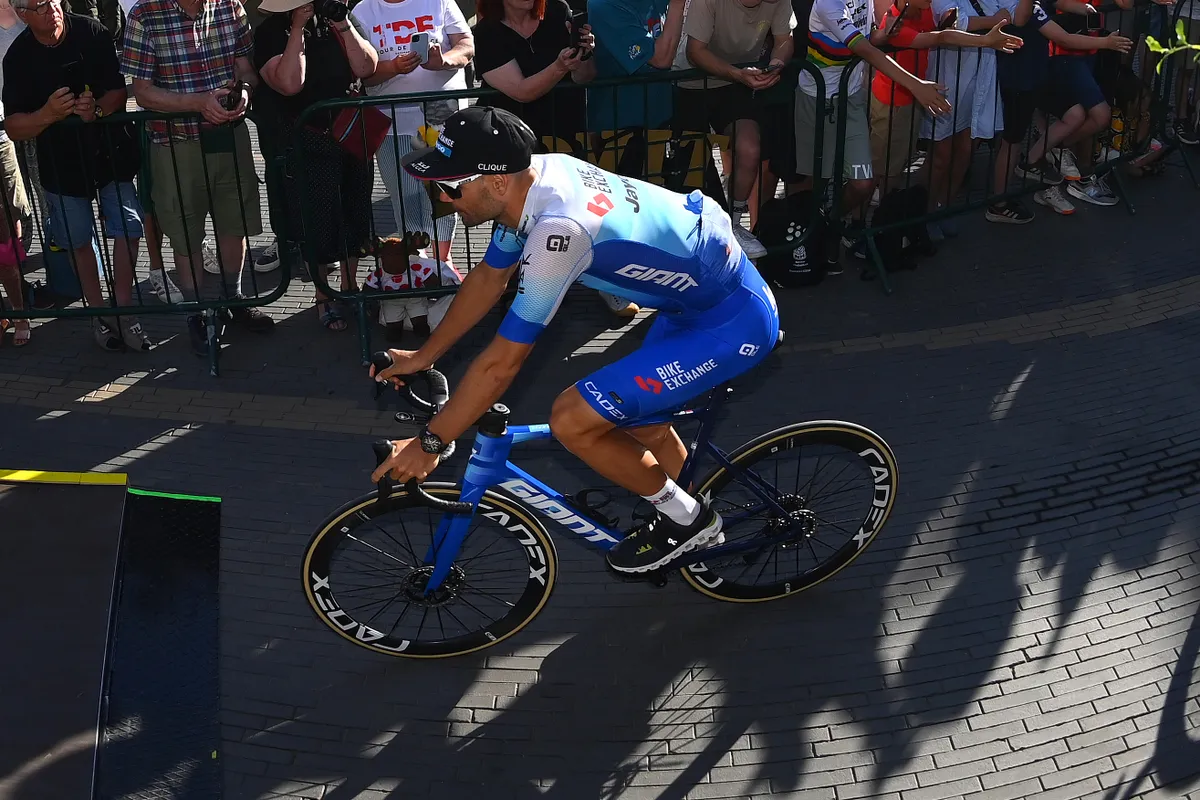
Our team on the ground have also confirmed the rear end of the bike has been redesigned.
The seatstays are now dropped, joining the seat tube – which no longer has a cutaway – about a quarter of the way down from the seat clamp. They are also slimmer overall, further hinting at the bike's revised all-rounder agenda.
The seat cluster has also been slimmed down, with material removed from the inside of the top tube and seat tube join.
Is this actually a new Giant Propel?
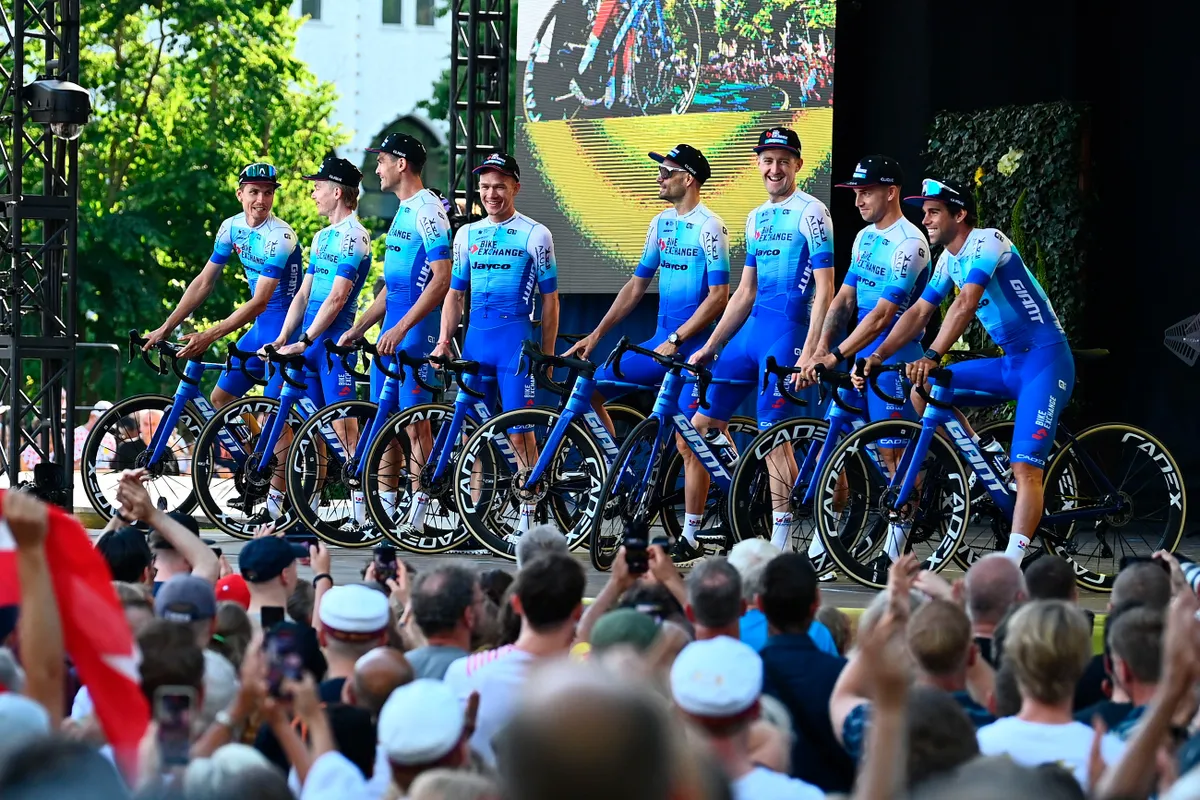
There are few details and no official word from Giant on the new Propel.
However, a new Giant Propel Advanced and Giant Propel Advanced SL were added to the UCI’s list of approved bikes and forks in June.
The two Propel entries on the list also come with the prefix ‘MY23’. This is a naming convention used by Giant to indicate the ‘model year’ of a bike. So MY23 will mean these bikes are the 2023 Giant Propel Advanced and Advanced SL.
It also makes sense to see Giant move in this direction. The days of super-aggressive aero bikes are, by-and-large, over. And while the TCR was once an influential bike, pioneering sloping top tubes, its external cable routing and scant aero features means it is now more retro than revolutionary.
This new Propel could fill the conspicuous modern race-bike shaped hole in Giant's current line-up.

